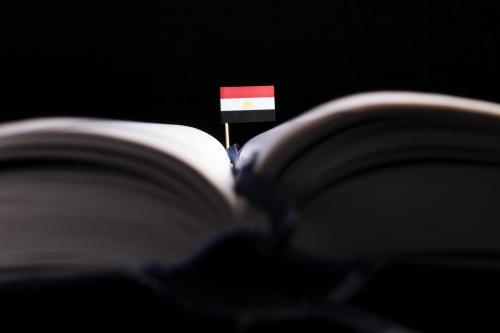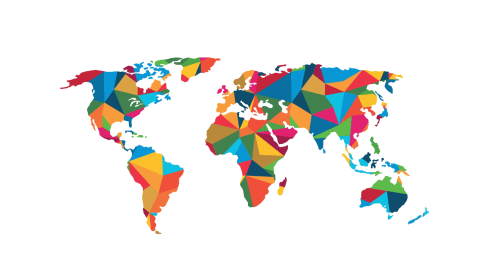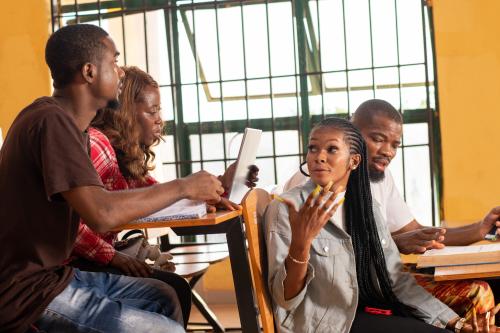As fighting continues in Iraq, Libya, Syria, and Yemen, the number of refugees and internally displaced persons stands at 15-16 million—a number that is unprecedented and growing. The displaced are mainly in seven countries (Egypt, Iraq, Jordan, Lebanon, Libya, Tunisia, and Turkey), with significant numbers seeking refuge in Europe and smaller numbers going everywhere from Oman to Somalia. While governments scramble to cope, tensions between the displaced and host communities continue to simmer (from Lebanon to Iraq’s Kurdish region to Baghdad.
Now, in order to see the beginning of a return process, peace must return and a reconciliation process will have to take place. Even then, home may no longer be the place it used to be. No matter how much is invested in housing, services, and critical infrastructure, only those feeling safe will show up and they may well not be the ones originally displaced.
For many reasons, going back home gets harder with each passing year. Some of these reasons are relatively benign: the rural displaced may seek refuge in urban areas and then lose the skills or interest in returning to farming; some people form family ties beyond their old communities. Other reasons are less benign. The conflicts in Syria and Iraq are increasingly seeing instances of well-documented ethnic and sectarian displacements. The Islamic State group’s brutal onslaught against the Yezidis, not to mention its barbaric treatment of Christian and Shiite populations, stands out. Sunnis opposed to the Islamic State group have also been mercilessly attacked. But these are not the only instances of specific groups’ being targeted or displaced.
In Iraq, the expansion of Kurdish rule to Kirkuk and its environs has led to Arabs being displaced from previously mixed Arab-Kurdish areas. According to the Al-Monitor web site “…the Kurds do not want to have the Arabs return to these areas after the massacres against Yazidis and the perception that they [the Arabs] have worked with [the Islamic State group]. Before [the Islamic State group], the relations between local Arabs and Kurds were much better.” So far the numbers of the displaced are relatively low, but things could change.
The sectarian conflict between the Alawite/Shiite and Sunni populations in Iraq and Syria are establishing difficult-to-reverse facts on the ground. In Iraq, 85 percent of IDPs are Sunnis. In March 2015, the United Nations Office of the High Commissioner for Human Rights (OHCHR) released a comprehensive study of human rights violations by both the Islamic State group and pro-Iraqi forces. The Islamic State group, OHCHR concluded, likely committed genocide and crimes against humanity against the Yazidis. It also concluded that the Shiite militias had engaged in brutalities and sectarian cleansing. Human Rights Watch noted that “building destruction in at least 47 predominantly Sunni villages was methodical and driven by revenge and intended to alter the demographic composition of Iraq’s traditionally diverse provinces of Salah al-Din and Kirkuk.” Violence is also being visited on the remaining Sunni communities in Samarra, Baghdad and elsewhere, while Shiite neighborhoods continue to face bombings.
Indeed, with the Kurds in firm possession of the north of Iraq and willing to fight only to preserve and perhaps enlarge their territory, and with ethnic displacement taking place south and north of Baghdad to strengthen the majority Shiite populations of those areas, there seems to be less of a desire to take the fight to Sunni provinces in the west of the country, especially by the weak Iraqi Army. The alternative are Shiite militias and their use remains highly problematic in heavily Sunni areas. When these militias retook the Sunni town of Tikrit—Saddam Hussein’s hometown—from the Islamic State group, the Sunni population fled and have not yet returned.
In Syria, a similar proportion (around 90 percent) of a much larger population of refugees and IDPs are Sunnis. Here too ethnic displacements, including destruction of property and birth records, are taking place with a focus on removing populations and securing the Damascus-Homs-Syrian coast corridor to provide geographical and demographic continuity between held areas in Syria and Lebanon. Several reports document these activities, including one by a group of Lebanese, Iranian, and Syrian activists called Naame Shaam that uses open sources including satellite photography. Since many of the Syrian refugees in the north of Lebanon come from this corridor, their return, a contentious issues to say the least, is questionable. Syria is splintering along sectarian and ethnic lines as the northeast comes under Kurdish control; a newly invigorated opposition takes over the northwest and other largely Sunni areas; and the Islamic State group expands its reach in the east and encroaches on Damascus and beyond, while fighting the government and other opposition forces. The lines being drawn involve population displacements as well as placements of the “right” grouping.
Clearly, we are far from a situation in which a significant and sustainable return process can be contemplated. Continued fighting, including in cities like Mosul and Aleppo, promises more human misery and displacement. The international community needs to assist the displaced and host communities. However, it also needs to strongly raise its voice on these crimes to at least slow the pace of sectarian cleansing and bring bodies like the International Criminal Court into play. This would not only help hapless civilians but also those looking for more inclusive solutions such as the current Iraqi government. Continued silence on ethnic cleansing will only ensure decades of turmoil in the region.



Commentary
Will the Middle East’s displaced ever return?
June 2, 2015